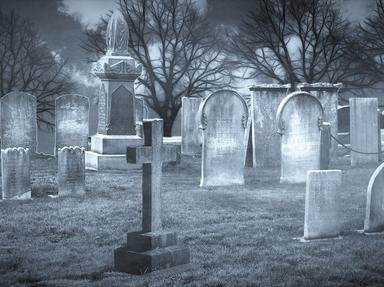Quiz Answer Key and Fun Facts
1. We begin with a Viking king who ruled England from 1016 to 1035. Canute, famous for trying to hold back the tide, could not hold back death either, and his bones rest in a mortuary chest in what cathedral?
2. Genghis Khan, conqueror of most of Asia and founder of the Mongol dynasty, is buried where?
3. Only one U.S. President is buried in the National Cathedral in Washington, DC. He was interred in 1924 and quotes from his speeches cover the walls surrounding his tomb. Who was he?
4. Tokugawa Ieyasu, founder of the Tokugawa Shogunate, is buried where?
5. Simon Bolivar, the Liberator, is still revered as a hero throughout the Americas. Where is he buried?
6. She is buried at the Mount Hope Cemetery in Rochester, New York - the same place as Frederick Douglass, whom she knew and worked with in life. Her epitaph reads 'Liberty, Humanity, Justice, Equality.' Who is this famous civil rights pioneer?
7. Shaka Zulu united hundreds of disparate Nguni-Bantu peoples under Zulu rule, creating an imperial military machine which dominated southern Africa for nearly half a century. In what city is he buried?
8. The body of Joseph Stalin, notorious Soviet dictator, was originally displayed alongside that of his mentor V.I. Lenin. By 1961, however, Stalin had fallen into disfavor with the current government, and his body was moved to what nearby location?
9. Salah al-Din Yusuf, known in the West as Saladin, recaptured Jerusalem from European crusaders in 1187. When he died in 1193, he was buried in Damascus, Syria, near what mosque?
10. The Mughal emperor Shah Jahan is most famous for constructing a truly glorious tomb for his beloved wife. Where is he himself buried?
Source: Author
CellarDoor
This quiz was reviewed by our editing team before going online.
Any errors found in FunTrivia content are routinely corrected through our feedback system.
